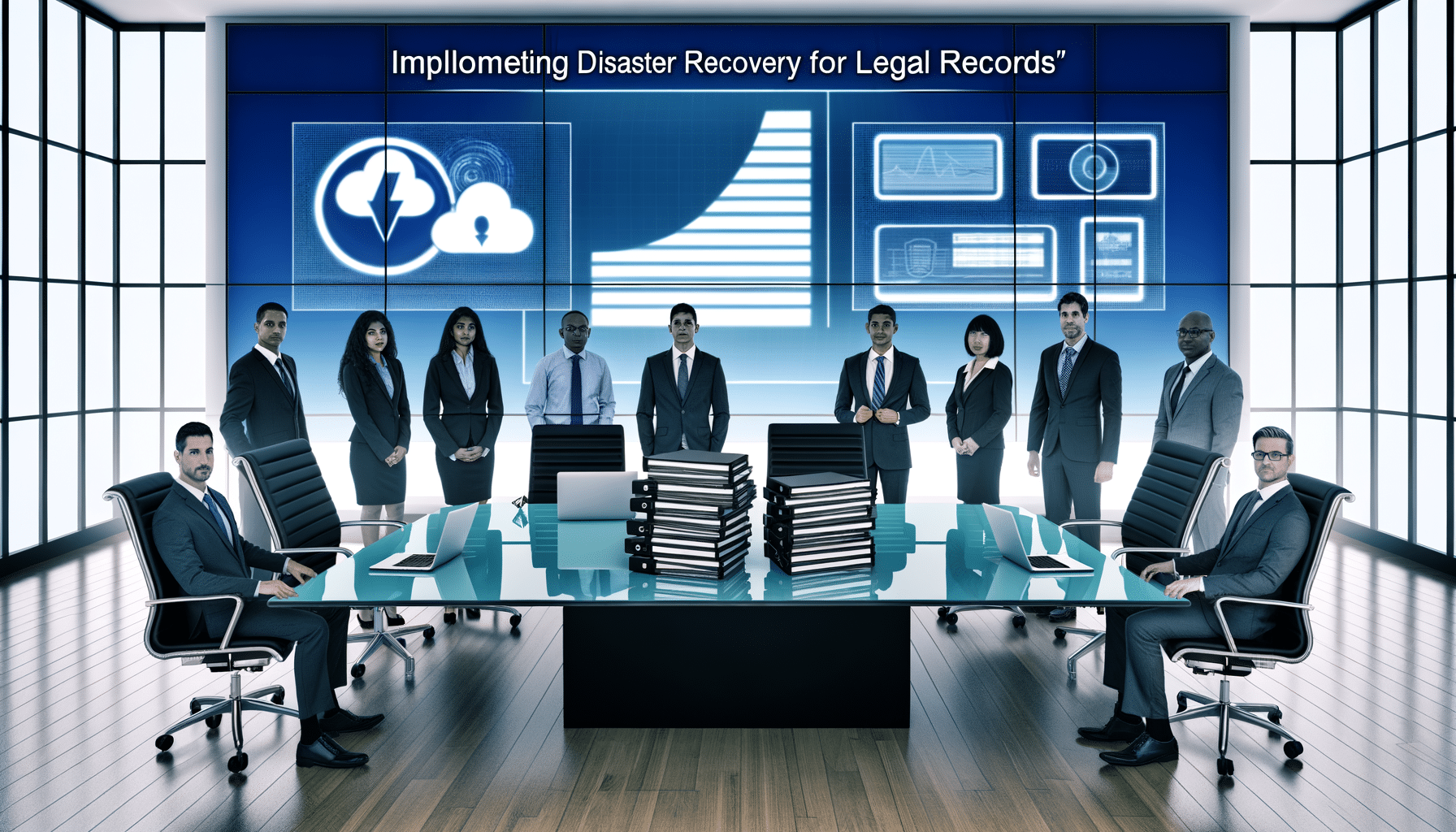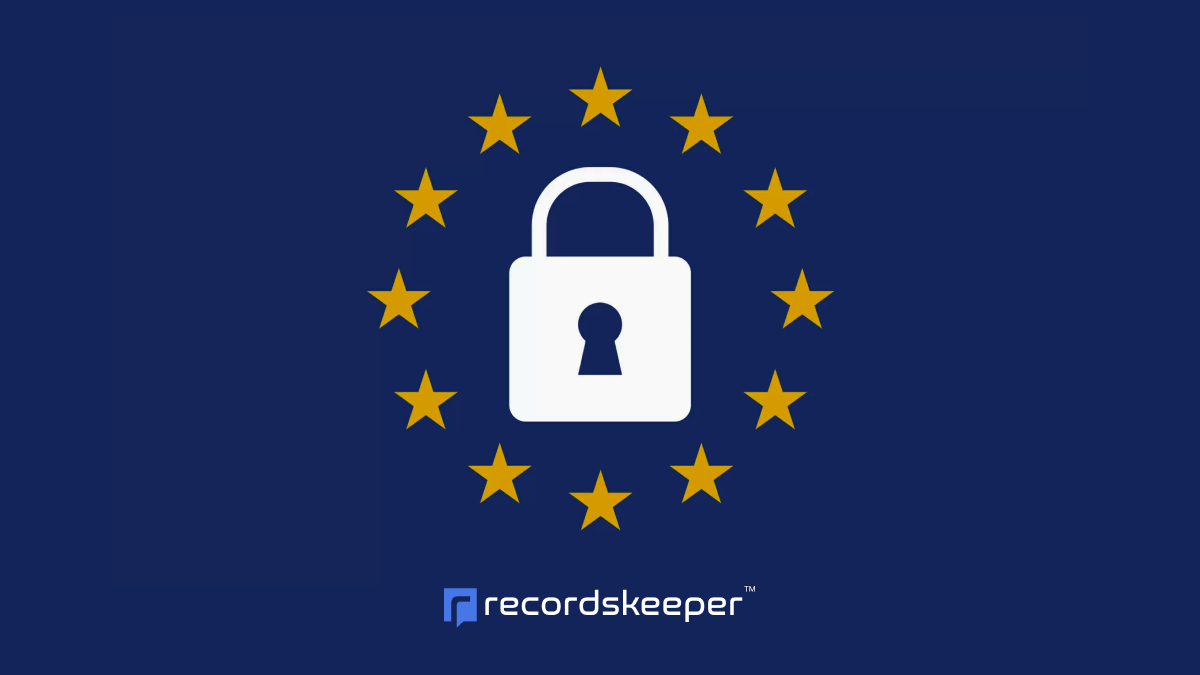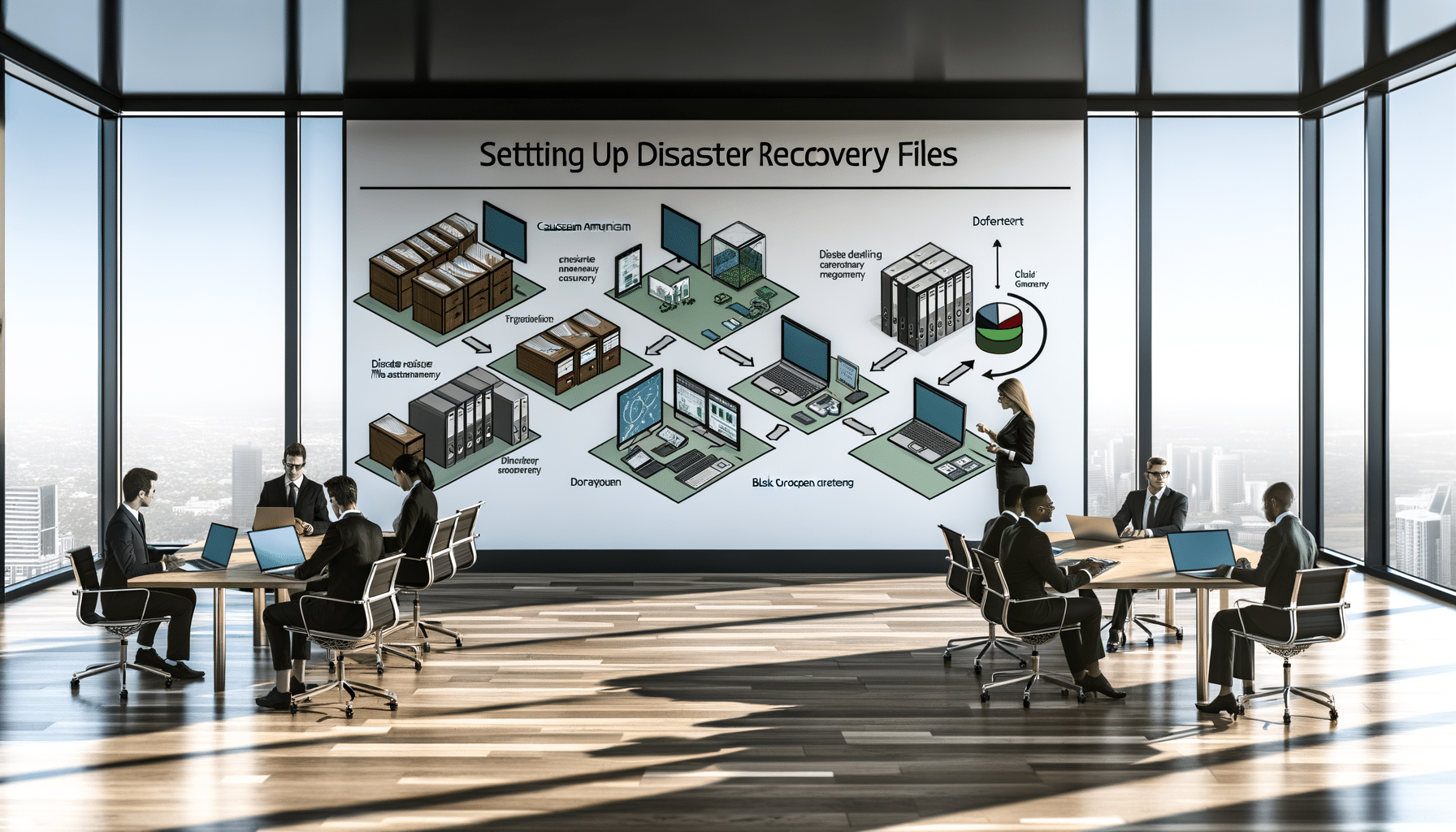- Risk Management
- August 31, 2024
Implementing Disaster Recovery for Legal Records

Introduction
As a leader in the record management space, I’m acutely aware of the critical nature of safeguarding legal records. These are not just pieces of paper—they are invaluable assets embodying agreements, rights, liabilities, and sometimes even the future of an organization. Imagine losing access to your legal documents in the blink of an eye due to a natural disaster or a cyber-attack. The consequences could be catastrophic. This is where the importance of a robust disaster recovery plan comes into play. By fortifying our legal records with comprehensive disaster recovery strategies, we are ensuring their safety and longevity.
The Importance of Disaster Recovery in Legal Records
One of the most vital lessons I’ve learned in my entrepreneurial journey is that security should never be an afterthought. Legal records, given their inherent value and sensitivity, demand the highest level of protection. Enter disaster recovery—a strategy designed to prepare, prevent, and mitigate data loss by ensuring the quick recovery of documents post-disaster. Without such a plan, businesses, government departments, and individuals risk jeopardizing valuable legal information.
Challenges in Legal Record Management
Legal records face unique challenges in their preservation and management. Beyond the traditional threats of fire, theft, and flooding, we now contend with sophisticated cyber threats that aim to exploit vulnerabilities. A successful disaster recovery plan addresses these offline and online risks, safeguarding data comprehensively.
Risk management in legal records isn’t a static challenge—it evolves constantly, influenced by changes in technology, regulations, and the global threat landscape. It’s imperative for every organization to stay ahead of these transitions by implementing and routinely updating disaster recovery plans.
Key Components of a Disaster Recovery Plan
When crafting a disaster recovery plan, one must consider specific elements that tailor to the needs of legal records:
- Risk Assessment: Before devising a plan, it is essential to evaluate potential risks to your records—infrastructure, locality specifics like flood zones, the nature of sensitive information handled, etc.
- Data Backup and Storage: Regular, automated backups are crucial. This ensures that legal records can be restored to their latest versions in the event of loss. RecordsKeeper.AI offers robust backup solutions with quick recovery options to seamlessly reinstate your legal documentation.
- Technology Integration: Embrace innovative technologies like Blockchain, which RecordsKeeper.AI utilizes for ensuring data integrity. Implement tamper-proof records that fortify your legal assets against unauthorized alterations.
- Communication Plan: A well-documented strategy that executes clear communication lines between data custodians, IT teams, and organizational leadership.
- Compliance Adherence: Legal records must always be in compliance with industry standards like GDPR, HIPAA, and SOX. Ensure your disaster recovery process maintains alignment with these regulations.
Integrating AI and Blockchain into Disaster Recovery
In a world dictated by emerging tech, leveraging AI and Blockchain can redefine our approach to disaster recovery. AI-driven categorization and retrieval of records minimize human error and quicken access to legal documents during crises. Blockchain, on the other hand, guarantees the integrity and immutability of records, providing a trustworthy foundation for all legal processes.
Real-life Implications of Disaster Recovery
Let me share a real-life example. A legal firm in Mumbai recently faced unexpected flooding, compromising their physical and electronic records. However, their disaster recovery plan, using an advanced digital records system akin to RecordsKeeper.AI, enabled them to rapidly restore their operations, demonstrating how disaster recovery can significantly reduce downtime and sustain business continuity.
Creating a Culture of Preparedness
Disaster preparedness goes beyond plans and strategies. It’s about fostering a culture that is consistently alert, aware, and ready to act. Regularly conduct drills, update your recovery protocols, and train your staff to respond adeptly in dire circumstances. Ensure that your recovery strategies renew along with the latest technological advancements and threats.
Conclusion
Legal record preservation is no longer just about storing documents; it’s a strategic imperative to protect, preserve, and propel organizations forward in the face of adversities. By embracing disaster recovery solutions like those offered through RecordsKeeper.AI, we empower ourselves with resilience and adaptability. I invite you to explore how you can enhance your disaster recovery planning by integrating modernized, tech-driven solutions for legal records. Connect with me and follow my journey as we continue to innovate and transform record management practices. Together, we can lead the charge toward a secure record-keeping future.
Toshendra Sharma is the visionary founder and CEO of RecordsKeeper.AI, spearheading the fusion of AI and blockchain to redefine enterprise record management. With a groundbreaking approach to solving complex business challenges, Toshendra combines deep expertise in blockchain and artificial intelligence with an acute understanding of enterprise compliance and security needs.
Related Posts

Achieving Perfect GDPR Compliance: A Financial Services Success Story
European Financial Trust (EFT), a global financial services company managing over $50 billion in assets, faced mounting pressure to ensure GDPR compliance across its vast network of client data and transactions. With operations in 15…
- January 15, 2025

Setting Up Disaster Recovery Files
Organizing critical records for emergency access.
- January 12, 2025
Archives
- January 2025
- December 2024
- November 2024
- October 2024
- September 2024
- August 2024
- July 2024
- June 2024
- May 2024
- April 2024
- March 2024
- February 2024
- January 2024
- December 2023
- November 2023
- October 2023
- September 2023
- August 2023
- July 2023
- June 2023
- May 2023
- April 2023
- March 2023
- February 2023
- January 2023
- December 2022
- November 2022
- October 2022
- September 2022
Want to get more content like this?
Signup to directly get this type of content to your inbox!!
Latest Post
Document Control for Equipment Maintenance
- January 20, 2025
Managing Records for Multiple Clients
- January 19, 2025
Handling Conference Documentation
- January 18, 2025
Setting Up Department Record Reviews
- January 17, 2025





